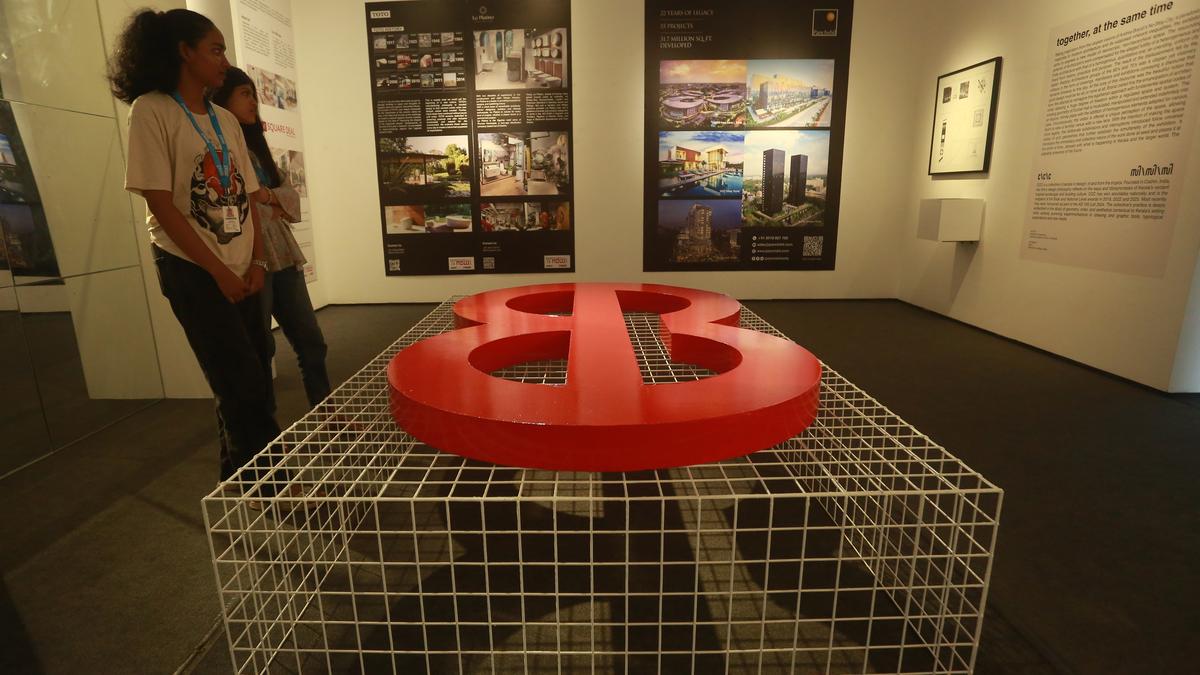
Expo by students of Seed, Muvattupuzha, is an intersection of architecture and art
The Hindu
Seedscape exhibition showcases architectural models and art installations by students, bridging architecture and art in a unique way.
The Durbar Hall Art Gallery has temporarily transformed into an architectural studio. Some parts of the walls have been covered in mirrors and drawings. White-painted metallic columns erected here and there appear to give a new spin to the cavernous gallery space.
The fifth edition of Seedscape, an annual exhibition of works done by the students of Seed — APJ Abdul Kalam School of Environmental Design, Muvattupuzha, is an intersection of architecture and art. The models, like art installations, engage with the viewer and inspire thought.
It also brings the essence of a modern-day architecture classroom to the mainstream. The walls are full of drawings and sketches, photographs and notes about basic architectural concepts and their relevance in today’s climate-conscious building ethos. Over 550 models and material experiments of 120 students from across batches have been displayed. Curated by Cochin Creative Collective, the expo sheds light on how architects interpret space in a functional and aesthetic sense.
It may seem a little challenging for a lay person to make sense of an architectural exhibition, but the student volunteers take the viewers along the exhibits, ready to help with information. “It is a great experience for us students as we get to meet people and there is an exchange of ideas,” say Gopika PJ and Niranjana KP, first semester students.
One part of the gallery wall is covered in textures, tiny cardboard models of buildings stuck to the wall and paintings of three different kinds. Akhilesh Chandran and Fathima Fidha, semester four, explain how the work is a representation of a building’s relationship with its surroundings. “The way buildings have to be constructed on low, moderate and high lands would be very different taking into consideration how land influences and shapes the design,” says Akhilesh. “Low land chosen for this study is Kumbalangi in Kochi, moderate land is Muvattupuzha and high land is Vagamon,” adds Fathima.
Divided into six groups, the students spent some time at their designated areas, studying the region, the existing conditions and interacted with the local population for the study. “I was in the group assigned to Kumbalangi and we learnt so much about its unique mangrove ecosystem. We had to think about building materials and their longevity that don’t disturb the delicate ecosystem. Our exhibit proposes stilts for the buildings in the region,” says Azar Anvar, also a semester four student.
The idea of the expo is to get the students’ work out of the campus and into the community, says Rajasekharan Menon, academic chair, Seed. “Architecture is an interactive discipline; it can easily connect with people. Over the five editions, Seed has been able to reach out to people,” he says. “The exhibits deal with a variety of topics such as basics of architectural language, relationship between building and landscape, climate responsive design, materiality and detailing, housing and urbanism. We plan to conduct the exhibition on a large scale every year,” he adds.

 Run 3 Space | Play Space Running Game
Run 3 Space | Play Space Running Game Traffic Jam 3D | Online Racing Game
Traffic Jam 3D | Online Racing Game Duck Hunt | Play Old Classic Game
Duck Hunt | Play Old Classic Game











